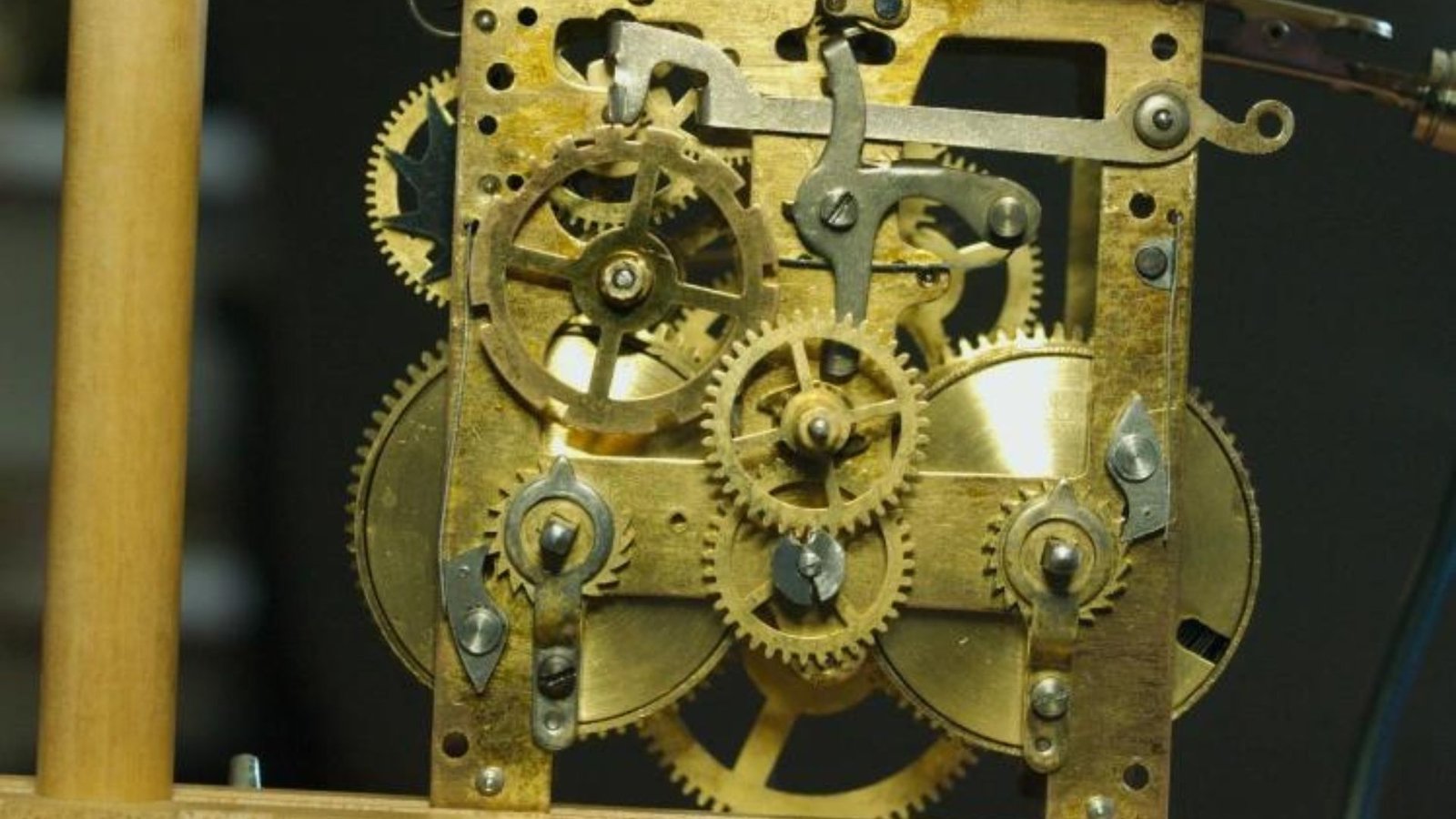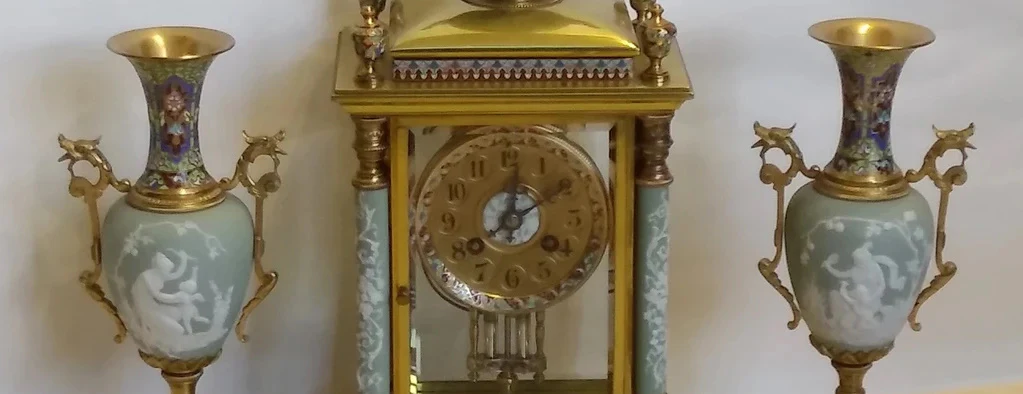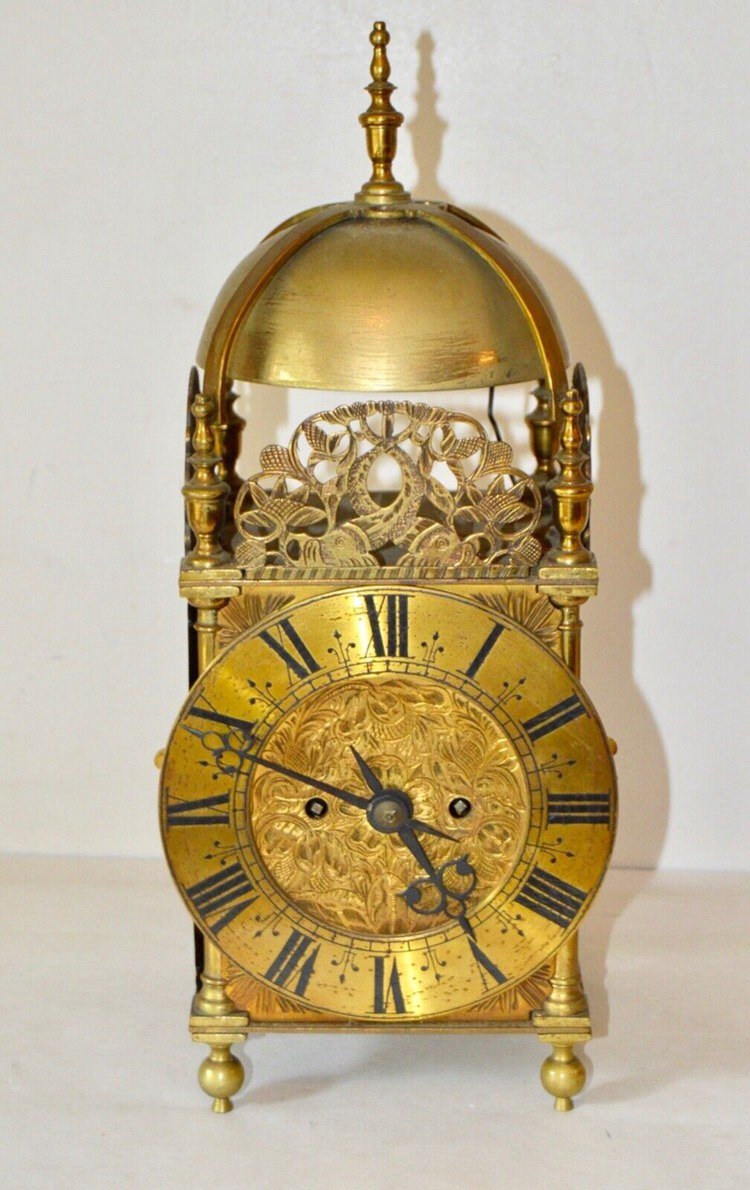Antique clocks are not only beautiful timepieces but also marvels of mechanical engineering. Understanding how these intricate mechanisms work gives insight into the craftsmanship and ingenuity of past clockmakers. In this guide, we’ll explore the key components and workings of antique clock mechanisms, providing a deeper appreciation of their design and function.

The Mainspring: The Power Source
The mainspring is the driving force behind many antique clocks, particularly spring-driven models like mantel and carriage clocks.
- Winding Mechanism: The mainspring is a coiled metal ribbon that stores energy when wound. This energy is gradually released, powering the clock’s movement.
- Energy Transfer: As the mainspring unwinds, it transfers energy to the gear train, which moves the clock’s hands. The amount of winding needed depends on the clock’s design, with some requiring daily winding and others able to run for up to eight days.
The Gear Train: Timing Control
The gear train is a series of interconnected gears that regulate the speed at which the clock’s hands move.
- Ratio of Gears: Different sized gears are carefully calibrated to control the minute, hour, and second hands. The gears reduce the speed of the mainspring’s energy, allowing the hands to move at the correct pace.
- Precision: The accuracy of an antique clock relies heavily on the precision of its gear train. Any misalignment or wear can cause the clock to run fast or slow.
The Escapement: Regulating Time
The escapement is one of the most crucial components of an antique clock, responsible for regulating the release of energy from the mainspring.
- Tick-Tock Motion: The escapement controls the rhythmic “tick-tock” sound of a clock, ensuring energy is released in controlled bursts. This process regulates the swing of the pendulum (in pendulum clocks) or the rotation of the balance wheel (in non-pendulum clocks).
- Types of Escapements: The most common escapement in antique clocks is the anchor escapement, which works with the pendulum. However, some clocks may use other types, such as the verge escapement, found in very early timepieces.
The Pendulum: Timekeeping Accuracy
Pendulum clocks are renowned for their accuracy, thanks to the swinging motion of the pendulum.
- Swinging Motion: The pendulum’s regular, rhythmic motion ensures consistent timekeeping. The length of the pendulum determines the clock’s accuracy; longer pendulums result in slower swings, while shorter ones swing faster.
- Gravity’s Role: Gravity governs the pendulum’s swing, making it sensitive to changes in positioning or environment. This is why antique clocks need to be placed on level surfaces to ensure accurate timekeeping.
The Balance Wheel: Alternative to the Pendulum
In smaller clocks, such as carriage or pocket watches, a balance wheel replaces the pendulum as the timekeeping regulator.
- Oscillation: The balance wheel oscillates back and forth, much like the swinging of a pendulum, but at a faster rate. This motion is controlled by a hairspring that acts like a pendulum for smaller mechanisms.
- Portable Clocks: The balance wheel makes it possible for smaller, portable clocks to maintain accurate time, even when moved.
The Striking Mechanism: Chimes and Bells
Many antique clocks are known for their striking mechanisms, which produce chimes or gongs at set intervals.
- Hour and Quarter Strikes: Some antique clocks chime on the hour, while others strike every quarter-hour. These mechanisms typically use a series of levers and gears that trigger a hammer to strike a bell or gong.
- Chiming Sequences: The most famous chiming sequence is the Westminster chime, often found in antique mantel and grandfather clocks. These clocks strike a specific melody every quarter-hour, adding a musical element to timekeeping.
The Dial and Hands: Time Display
The dial and hands are the most visible parts of any clock, but they also play a role in the clock’s mechanism.
- Gear Connection: The hands are connected to the gear train, which moves them at a regulated speed. Any imbalance or obstruction in the gears can affect the movement of the hands, causing them to stick or run inaccurately.
- Decorative Elements: Antique clocks often feature beautifully crafted hands and dials, with intricate designs that showcase the clockmaker’s artistry. These elements are often hand-painted or gilded, adding to the aesthetic appeal of the clock.
Winding and Setting Mechanisms
Antique clocks require manual winding and setting, unlike modern clocks that may be battery-powered.
- Winding Key: Many antique clocks come with a winding key used to tighten the mainspring. Overwinding or underwinding can affect the clock’s performance, so careful winding is crucial.
- Time Adjustment: The time on an antique clock can be set by gently moving the hands or adjusting a small lever connected to the gear train. Care must be taken to avoid damaging the delicate internal mechanisms.
Conclusion
Antique clock mechanisms are fascinating examples of mechanical ingenuity, combining precision engineering with timeless design. From the mainspring to the escapement, each component plays a vital role in keeping time accurately. Understanding these mechanisms not only helps in maintaining and repairing antique clocks but also deepens appreciation for their historical significance and craftsmanship.





Alright, signed up through FB77701registration, easy peasy. No hassle, straight to the games. If you need a quick sign-up, hit them up. Quick and easy: fb77701registration